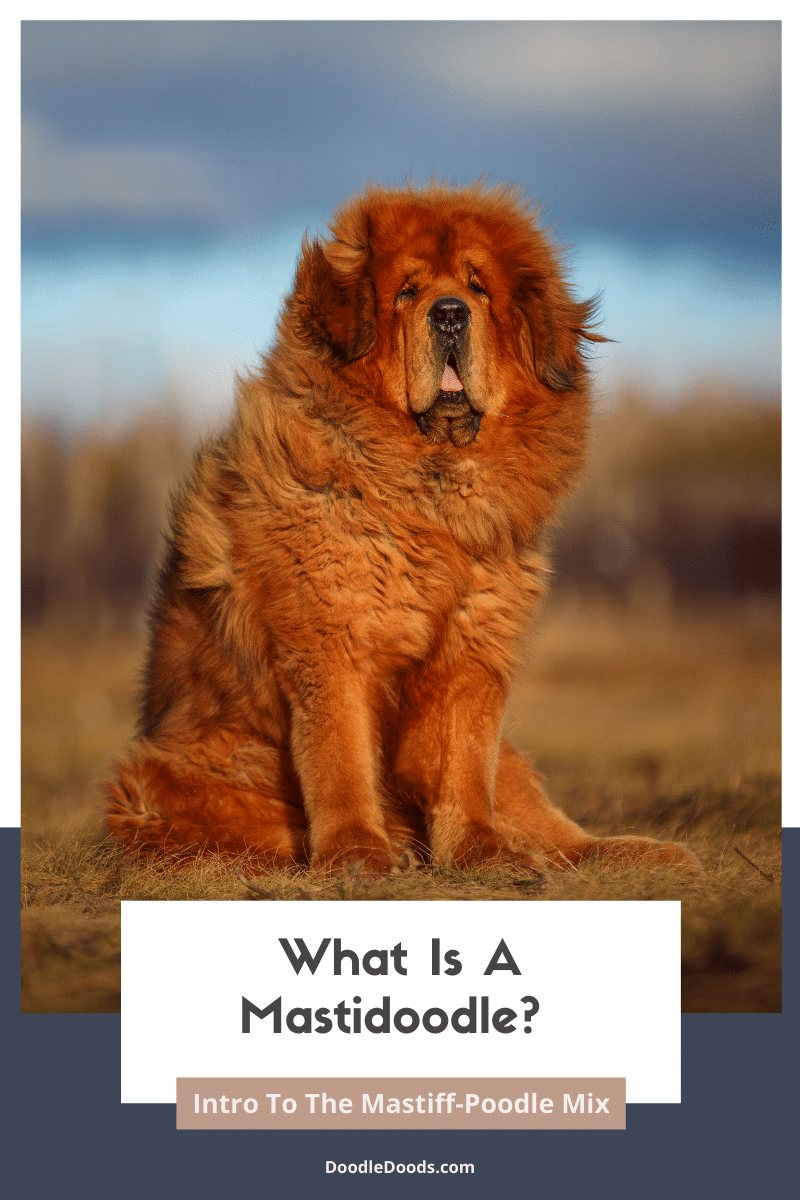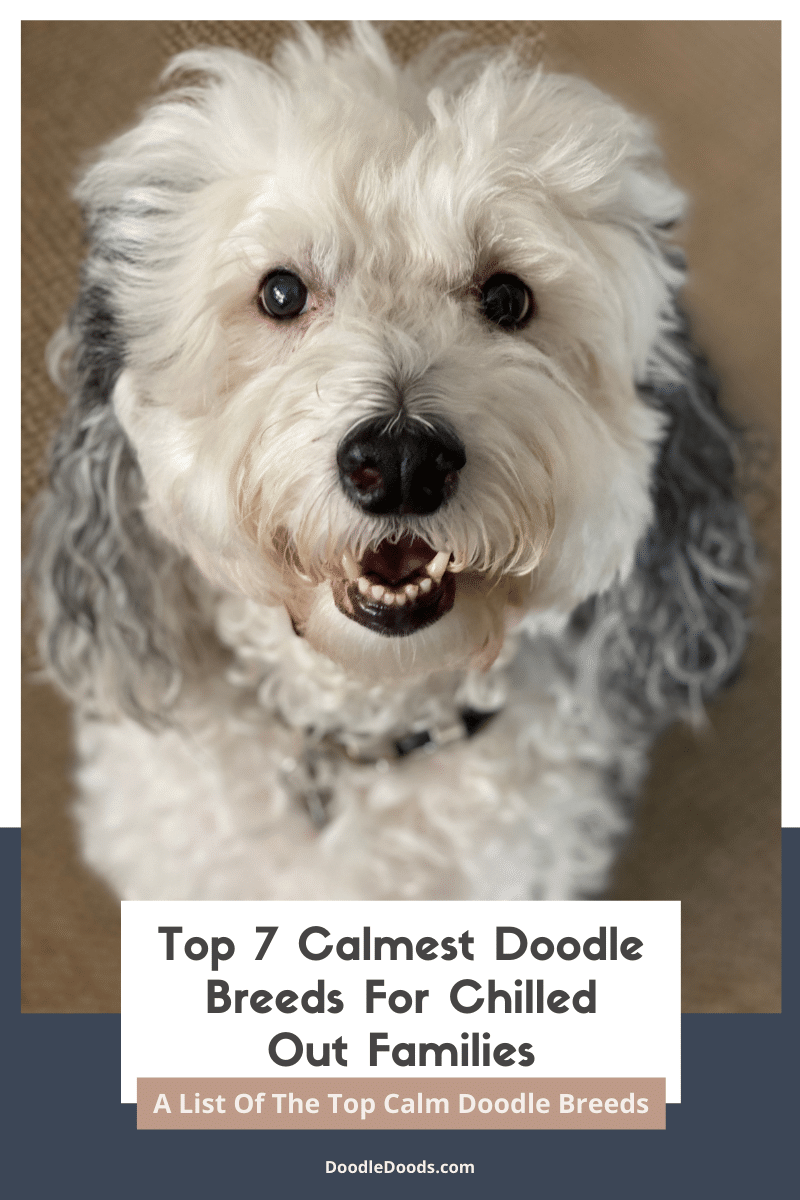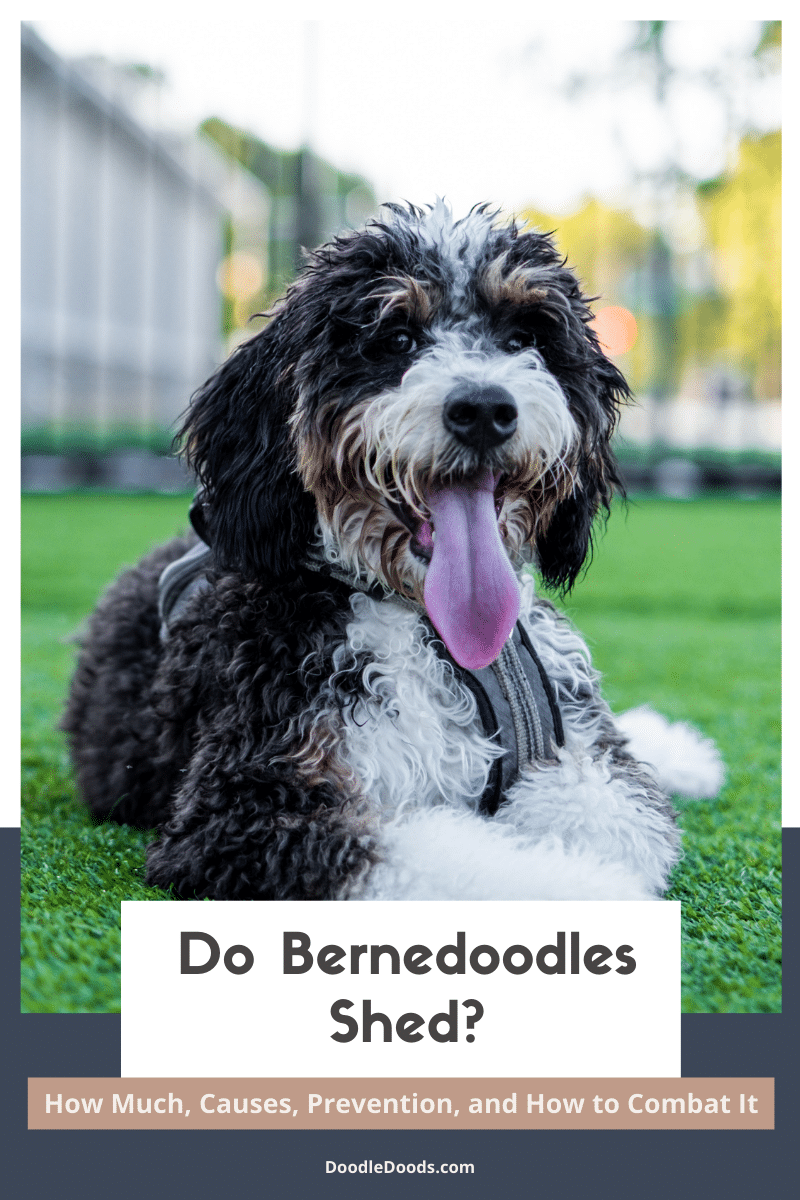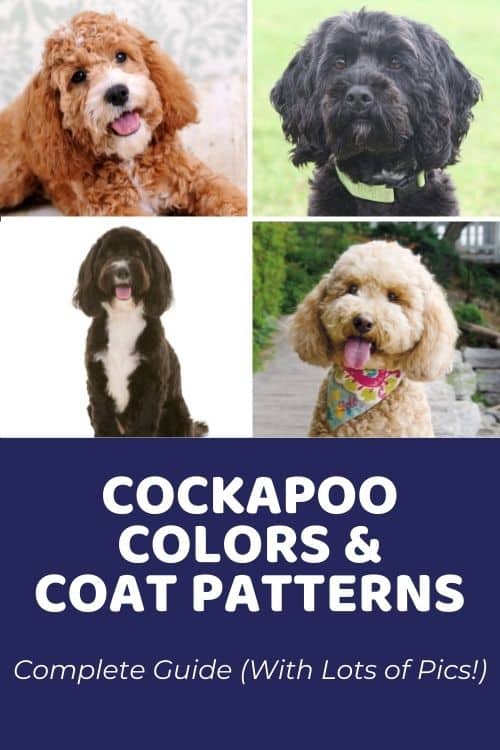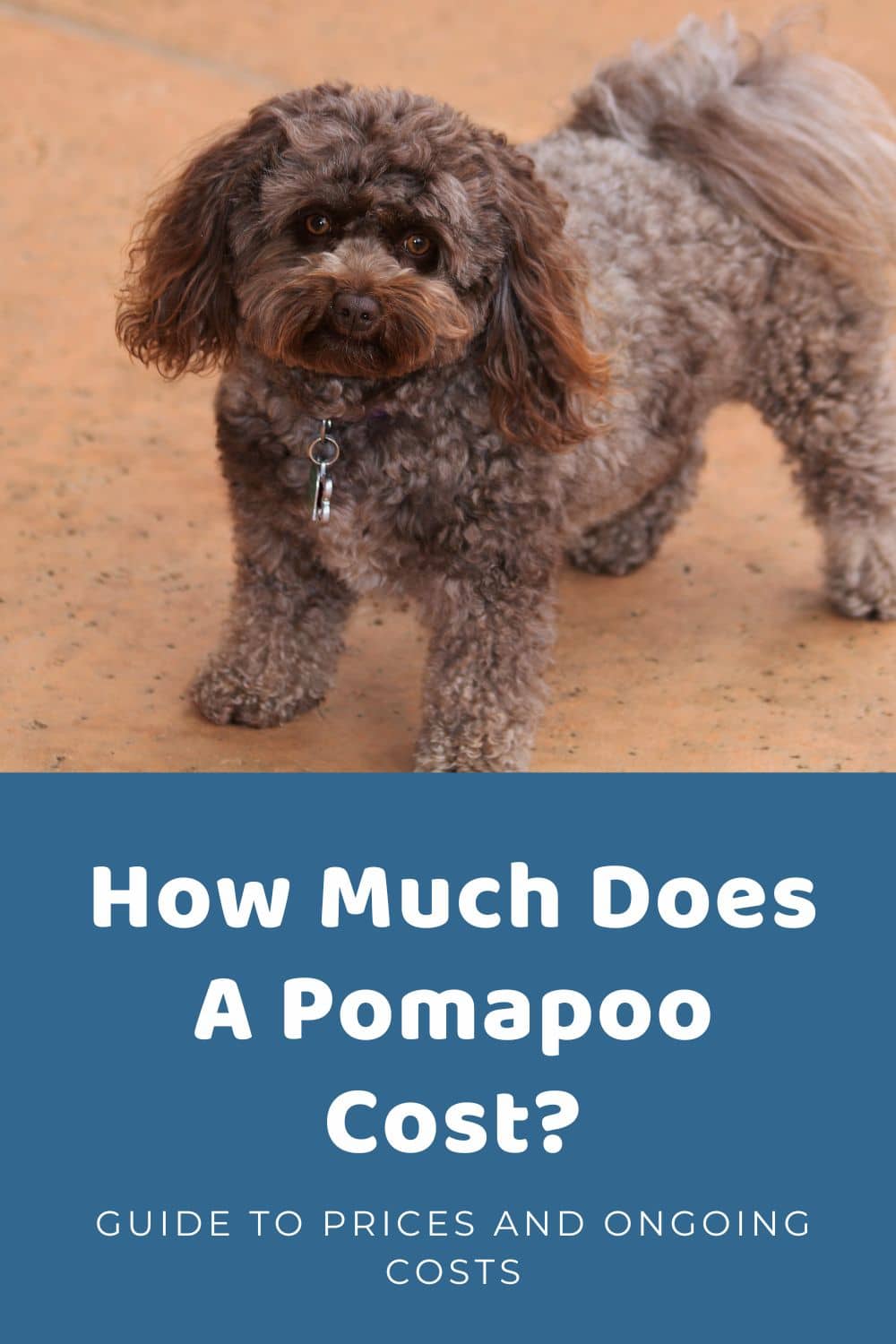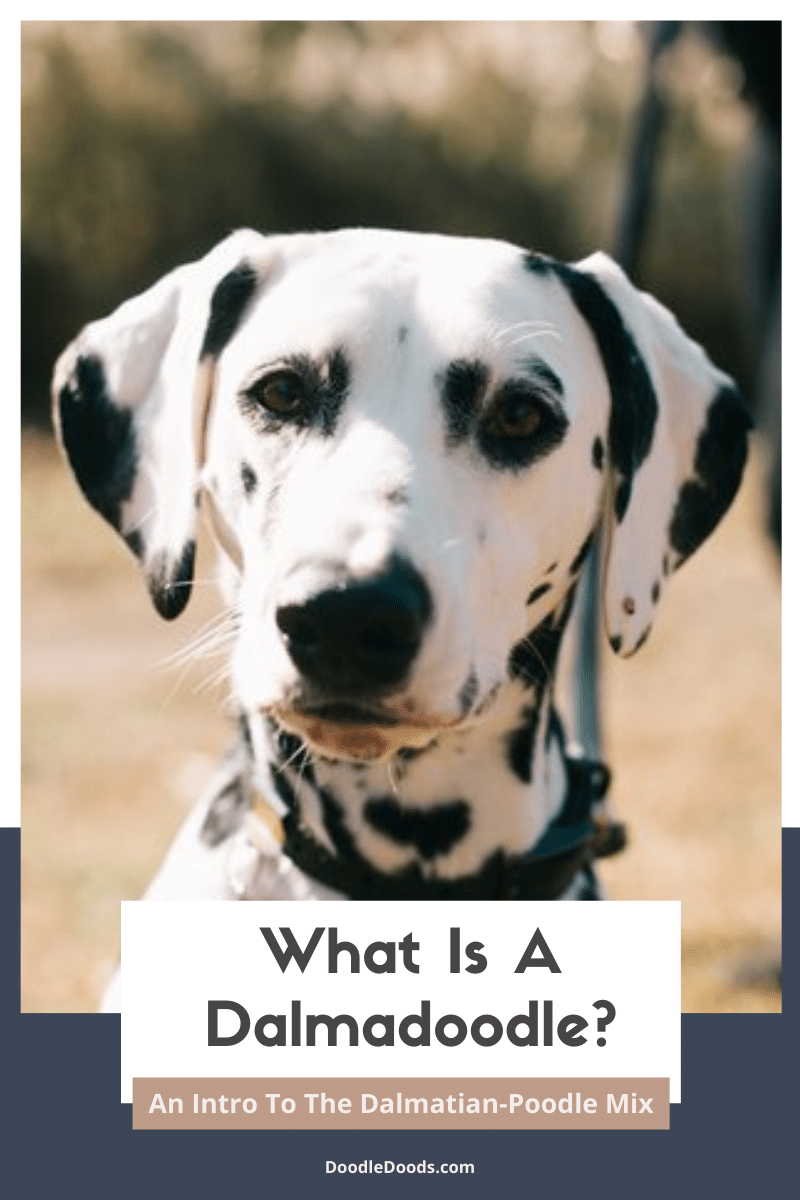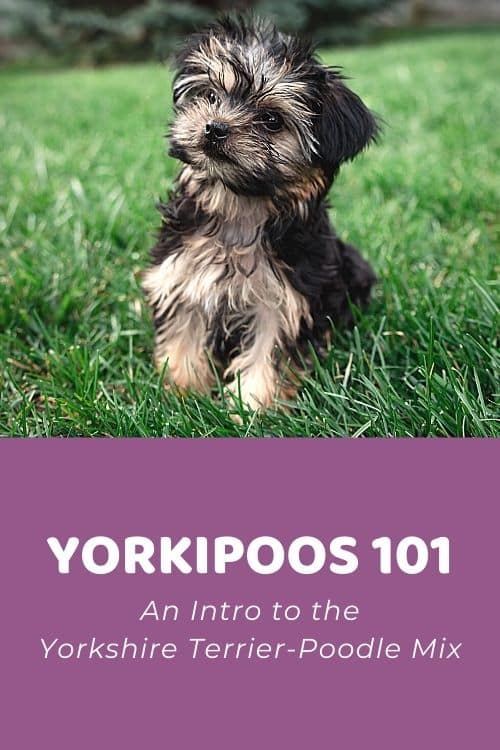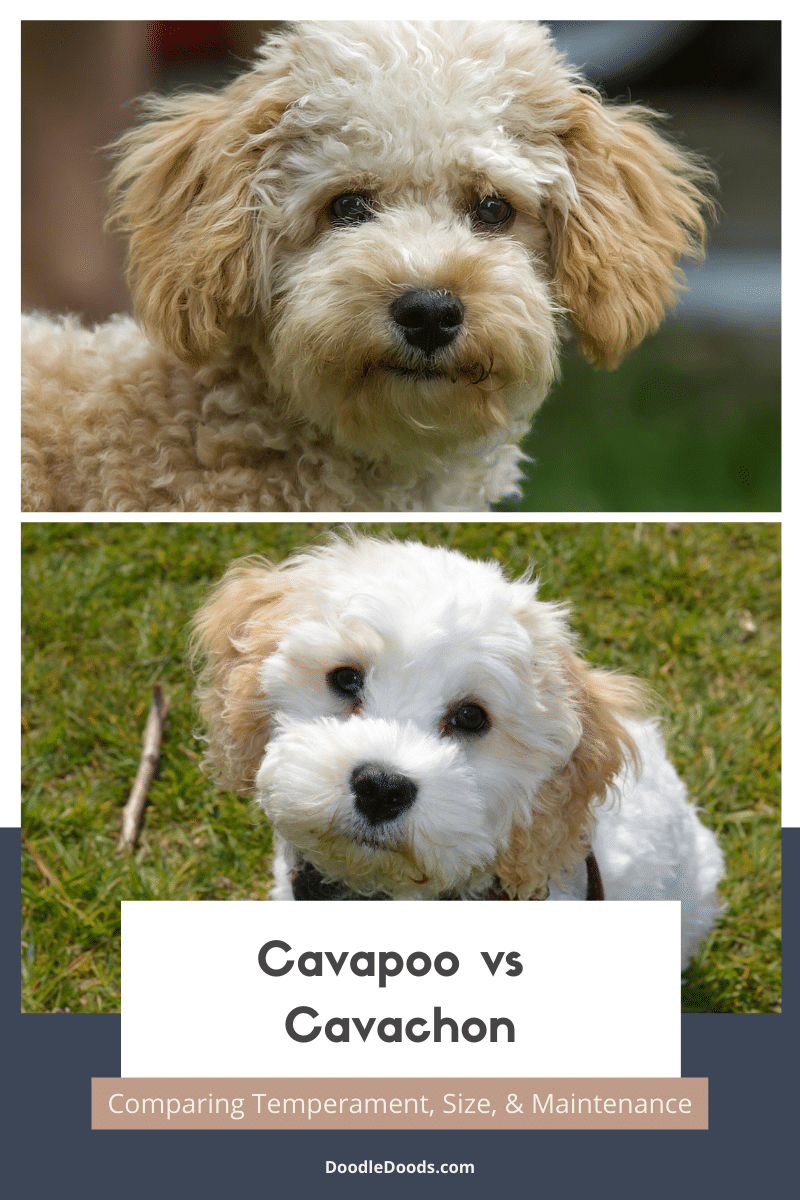If you’re a fan of Mastiffs and Poodles, then you’re bound to love the Mastidoodle. In this guide, we’re going to dive deep into the Mastiff-Poodle mix. You’ll learn all about the Mastidoodle’s appearance, personality and temperament, grooming and exercise needs, and much more. Let’s get into it!
Table of Contents
- What Is A Mastidoodle?
- Mastidoodle Physical Appearance
- Mastidoodle Pictures (Puppy & Adult)
- Mastidoodle Size: How Big Will A Mastidoodle Get?
- Variations & Generations
- Personality & Temperament
- Mastidoodle Health: Do Mastidoodles Have Health Problems?
- Mastidoodle Lifespan: How Long Do Mastidoodles Live?
- Exercise Requirements
- Training A Mastidoodle
- Mastidoodle Coat Care & Grooming
- Where Can You Get Mastidoodle Puppies?
- Mastidoodle: FAQ
What Is A Mastidoodle?
The Mastidoodle is a hybrid cross between the Mastiff and Poodle breeds. The Mastiff-Poodle mix is, much like its Mastiff parent, a very large-sized Dood with a majestic look. But in that big package of theirs is a sweet and gentle heart that makes for the most loving companion for anyone who’s looking for a low-shedding, giant-sized Doodle pup.
Both purebred Mastiffs and Poodles have been around for a long, long time. In fact, Mastiff-like dogs date back to Asia to 2,500 B.C.E! The Poodle isn’t exactly a very young breed, either. These pups have been bred as hunters for centuries now. However, today the smaller varieties of the Poodle are most commonly adopted as cheeky lil’ pets.
While Mastiffs are well-known for their distinct giant stature and dignified demeanor, Poodles are praised for their high levels of intelligence and hypoallergenic coats. It was about time the Mastiff-Poodle mix came to be!
Although it’s not exactly known when and where exactly the Mastidoodle was first created, we assume they emerged some time in the last few decades like most other Poodle mixes. We have to thank the OG Goldendoodle and Labradoodle for paving the way!
Mastidoodle Physical Appearance
When describing the looks of a Mastidoodle, the most common thing you’ll hear is that they’re like big teddy bears. They’re large to giant-sized dogs with a muscular, yet lean build. Mastidoodles usually have fluffy coats that can range from curly to wavy to straight. In addition to that, they have floppy ears and usually slightly longer muzzles than those on purebred Mastiffs.
Colors
Mastidoodles can inherit quite a wide variety of coat colors and patterns from its purebred parents. They may come with signature Mastiff coat colors like apricot, brindle, or fawn. Or, they may also inherit tones ranging from the darkest black and gray to lighter silver and cream hues from the Poodle’s side of the lineage.
Since Poodles can also sport patterned coats that combine different tones, or more rare colors like parti, phantom, abstract, or sable, it’s very much possible for their Mastidoodle offspring to also flaunt those beautiful colors. Mastidoodles may also have other-colored markings and even a black or a white mask on their face that looks especially cute! The black mask is seen on both Mastiffs and Poodles, making it a common thing for their Mastidoodle pups.
Coat, Shedding, & Hypoallergenic Level
Mastidoodles are bred to have low-shedding coats that are generally allergy-friendly. Their coats can be curly, wavy, or straight, depending on which side of their lineage they take more after. The key to understanding a Mastidoodle’s potential coat type, shedding, and hypoallergenic levels is to first look at their heritage.
It’s probably no news to anyone that Poodles are one of the most hypoallergenic dog breeds of all. Technically, there’s no such thing as a 100% hypoallergenic dog. However, the Poodle does come pretty close with its thick layers of textured fur that trap in any loose, dead dog hair that’s usually the culprit triggering dog allergies. In addition to that, Poodles don’t have a shedding undercoat, unlike many other double-coated breeds.
In contrast, the Mastiff has a short and dense double coat that does have that shedding undercoat. This makes the purebred Mastiff a not-so-great option for people who suffer from allergies. Needless to say, the Mastiff-Poodle mix can lean on either side of their lineage. Or, their Mastidoodle offspring can fall right in between those two very different coat types.
Mastidoodles that inherit the Poodle’s curly locks are typically the safest bet for someone with severe dog allergies or people who’d like to keep that shedding to an absolute minimum. But with great power comes great responsibility! These Doods are also the most high-maintenance, requiring the most grooming to prevent matting.
The wavy type of shaggy coat is probably the one we see most commonly on Mastidoodles. Although not as prone to matting as the curly coat, it’ll still require regular grooming to prevent matting and to minimize any potential for shedding. Speaking of which, it’s not uncommon for some wavy-coated Mastidoodles to also inherit a lightly shedding undercoat from the Mastiff.
Then there’s the straight coat Mastidoodle that almost always has an undercoat. The Poodle genes indeed ensure that these Doods also shed less than purebred Mastiffs. However, the straight coat type isn’t generally the best choice for people with severe dog allergies. Fortunately, regular brushing can greatly help reduce shedding.
Mastidoodle Pictures (Puppy & Adult)
Describing what a Mastidoodle looks like is one thing. It’s a completely different thing to see it with your own eyes! Here are some cute Mastidoodle pictures for you to swoon over:
| Black Mastidoodle | @lucy_the_mastidoodle |
| Gray Mastidoodle | @rosie_the_mastidoodle_cgc |
Mastidoodle Size: How Big Will A Mastidoodle Get?
The Mastidoodle is a large to giant-sized Doodle with a muscular and lean build. Mastidoodles can weigh between 80 and 140 pounds as adults. Their height ranges between 24 and 36 inches when measured from the shoulder. They really are big boys and girls!
| Standard Mastidoodle | |
| Weight | 80-140 pounds |
| Height | 24-36 inches |
| When Full-Grown? | 18-36 months |
*A dog’s height is measured from their withers, which is the highest part of their shoulder blades.
For the Mastiff-Poodle mix, breeders almost exclusively use the Standard Poodle. That’s because the purebred Mastiff can weigh as “little” as 120 pounds and grow up to a whopping 230 heavy! As you can imagine, even the largest Standard Poodle with its average 38 to 70 pound weight is considerably smaller than the smallest Mastiffs.
Of course, in the future we might see more variations to the Mastidoodle’s size. As there are two other sizes of the Poodle – Miniature and Toy – it’s not completely out of the question for smaller Mini Mastidoodles emerging in the future. But, those Mini Mastidoodles will be nowhere near as small as Mini Poodles that weigh only 10 to 20 pounds once fully-grown.
Variations & Generations
The fun, yet complicated thing about Mastidoodles is that they can come in numerous variations and generations. To put it simply, a Mastidoodle’s generation tells us how a litter of Mastidoodle puppies was bred. Whether they have purebred parents or do they have a Mastidoodle parent, and so on.
What makes the topic helpful in other areas is that a Mastidoodle’s generation is also a great way to estimate the potential outcome. Although breeding for generations doesn’t replace proper, extensive genetic testing, it does help breeders strive for achieving certain traits and characteristics in their litters. For instance, their Mastidoodle puppies’ size, coat type, potential for shedding, and even temperament traits.
So, how does it all work exactly? Let’s take a look at all the possible Mastidoodle generations and what each of them entails.
| 1st Parent | 2nd Parent | % Mastiff* | % Poodle* | |
| F1 Mastidoodle (first-generation) | Mastiff | Poodle | 50% | 50% |
| F1B Mastidoodle (first-generation backcross) | F1 Mastidoodle | Poodle | 25% | 75% |
| F1BB Mastidoodle (first-generation backcross backcross) | F1B Mastidoodle | Poodle | 12.5% | 87.5% |
| F2 Mastidoodle (second-generation) | F1 Mastidoodle | F1 Mastidoodle | 50% | 50% |
| F2B Mastidoodle (second-generation backcross) | F1 Mastidoodle | F1B Mastidoodle | 37.5% | 62.5% |
| F2B Mastidoodle (alternate cross) | F2 Mastidoodle | Poodle | 25% | 75% |
| F3 / Multigen Mastidoodle | F1B Mastidoodle or higher | F1B Mastidoodle or higher | Varies | Varies |
*These are generic calculations only – genetics are rarely mathematically accurate.

As you can see, there’s lots and lots of variety to the Mastidoodle crossbreed. But as the Mastiff-Poodle mix is still relatively new and rare, they’re most commonly bred as first-generation (F1) or first-generation backcross (F1b) Doodles. Once the Mastidoodle crossbreed becomes more well-known amongst dog lovers, we can expect to see later generations of these Doods as well.
Personality & Temperament
Mastidoodles are calm and dignified dogs. They’re best described as lovey-dovey, super affectionate companions. They haven’t gotten an inch of aggressiveness in them, and they’re known to be very gentle with everyone in their household. As both Mastiffs and Poodles are incredibly intelligent, it shouldn’t come as a surprise that the Mastidoodle is also a very smart pooch.
Of course, the key to unleashing a Mastidoodle’s affectionate and sweet nature is to socialize them from a very young age with people of all ages as well as other dogs and even cats. The same goes for their smarts – be sure to stimulate your pup’s brain with fun training sessions, playtime, and plenty of enrichment toys and games for them to put their mind to use. This will also prevent boredom and destructive behaviors!
That being said, boredom can become an issue for these Doods. Likewise, they can be prone to separation anxiety. For this reason, we’d only recommend you adopt a Mastidoodle if at least one person in your household can stay at home during the office hours to prevent your Mastipoo getting lonely or bored.
Another thing to remember with Mastidoodles is that they can be stubborn from time to time. They’re also quite sensitive, so make sure that you’re only using positive reinforcement. Never hurt your pet’s feelings with loud yelling or scolding.
Oh, and, Mastidoodles can also be very protective of their family and home. Although they aren’t the biggest barkers amongst Doodle breeds, they will certainly let you loudly know whenever they sense a threat.
Mastidoodle Health: Do Mastidoodles Have Health Problems?
Like other Doodle breeds, Mastidoodles are generally healthy dogs, benefitting from hybrid vigor. However, they can still be at risk of certain conditions that are observed in Poodles and Mastiffs. These include joint problems like hip and elbow dysplasia, and eye diseases like entropion, cataracts, or progressive retinal atrophy (PRA). They’re also at risk of thyroid issues, Addison’s Disease, and a severe condition called gastric dilatation volvulus (GDV).
Although not all genetic conditions can be prevented, the chance of your pup inheriting any of these conditions can be greatly reduced by choosing a reputable breeder. Responsible breeding practices involve extensively testing the breeding parents for numerous genetic conditions to ensure that the puppies are born from healthy and strong bloodlines. This will directly impact your puppy’s quality of life and lifespan!
In addition to the more major health concerns we mentioned, Mastidoodles may also suffer from less severe health problems. One of the most common thing for these Doods is that they can be prone to allergies. Whether it’s due to certain ingredients in their food or dog shampoo, this can be very well managed by switching out their kibble formula or grooming products.
Moreover, Mastidoodles are also prone to ear infections. As their floppy ears can block proper airflow inside the ears, it’s not uncommon for them to suffer from this issue. Fortunately, you can easily prevent those painful ear infections by regularly cleaning your pal’s ears and keeping them nice and dry after every wash and swim.
Mastidoodle Lifespan: How Long Do Mastidoodles Live?
Mastidoodles have an average life expectancy of around 8 to 12 years. That’s a great deal longer to the purebred Mastiff’s life expectancy of 6 to 10 years. Standard Poodles usually live between 12 and 15 years. So, the Mastidoodle will very much benefit from its Poodle heritage in this area, too. Usually, smaller dogs will outlive larger ones, so that might also determine the outcome a bit.
All in all, to keep your Mastidoodle healthy, happy, and living by your side for as long as possible, there’s no way around the key basics – a healthy and balanced, high-quality diet, daily exercise, feeding them the right amount of food, and lots of kisses and cuddles. In addition to that, regular vet checkups are vital to keep track of your furbaby’s health and discover any worrying conditions early on.
Exercise Requirements
Although athletic for sure, the Mastidoodle isn’t an overly energetic dog that requires rigorous exercise 24/7. On the other hand, if your Mastidoodle leans more on the Poodle’s side of its lineage, they may very well require more exercise than usual. The easiest way to exercise your Mastidoodle is to take them on daily walks. About 30 to 40 minutes both in the morning and evening will be perfect for these Doods. It’s also likely that your Mastidoodle will love swimming, so that can be a great way to mix things up, too!
Because of the Mastidoodle’s large size, you shouldn’t put too much strain on their joints and bones with excessive exercise like long running sessions and so on. It’s especially important to stay mindful of this in puppyhood when their joints and bones are still developing to prevent any developmental issues and joint problems later down the line.
Additionally, don’t forget to set aside plenty of time for fun games like fetch and tug of war. You should also stock up on chew toys and interactive games for your Dood to play with. Not only is this a great way to keep your pup entertained, it’ll prevent boredom and any destructive behaviors stemming from it. Intelligent dogs as they are, Mastidoodles need to put their brains to good use. For the Mastiff-Poodle mix, mental stimulation is just as important as physical stimulation.
Training A Mastidoodle
Mastidoodles are bright and smart dogs that can learn new behaviors and tricks rather quickly. They’re eager to please their owners, especially if you’ve formed a strong bond. On the other hand, they can get bored easily, and sometimes also let their stubborn side loose. As with any breed or crossbreed, it’s vital that you stay consistent, patient, and use positive reinforcement training methods. Rewarding your pooch with tasty treats and plenty of praise will go a long way.
It goes without saying that you should never scold or punish a Mastidoodle for not behaving exactly the way you expected them to. Keep in mind that Mastidoodles can be very sensitive dogs, so any harsh words or yelling will only backfire.
In regards to the Mastidoodle’s training regimen, it’s best to start training your puppy as soon as you bring them home. The easiest way to go about this is by setting a daily schedule for both you and your pup, and sticking to it. It’s going to be so much easier with potty training, crate training, and obedience training if your Mastipoo knows when to expect its bedtime, potty breaks, and mealtimes.
Another crucial aspect of raising a well-behaved and confident Mastidoodle is to socialize them with lots and lots of people. And other pets, too. This is a great confidence building exercise that teaches your puppy from a young age how to properly interact with anyone they encounter.
Online Puppy School by Baxter & Bella
For anyone planning to adopt a Mastidoodle pup, we absolutely cannot recommend the Online Puppy School by Baxter & Bella enough. For a one-time subscription fee, you’ll gain access to their endless bank of resources on all things related to successfully raising and training a dog.
Amazing part of this program is that you can cover each lesson or topic at your own pace, doing it all from your dog’s normal home environment. Plus, you’re going to learn all the necessary tools to successfully raise your pup into a well-rounded adult, which is also wonderful for the bond you build with your Dood.
Although the online form of this program will exclude the vital socialization aspect of in-person training classes, the upsides of this program definitely outweigh them. Just make sure to safely let your puppy socialize with other dogs once they’ve received their vaccinations.
Mastidoodle Coat Care & Grooming
Mastidoodles are often called high-maintenance due to their extensive grooming routines. With thick and fluffy coats, there are quite a few different steps to schedule into your Mastidoodle’s grooming regimen. These include brushing, bathing, and hair trimming, to name a few.
Brushing A Mastidoodle
Daily brushing is absolutely necessary for Mastidoodles to take care of their dense coats. Not only will this be the only way to prevent matting, it’s also an excellent way to reduce any shedding if you’ve got a double-coated Mastidoodle.
Although curly-coated Mastidoodles require the most upkeep (after all, they’re the most prone to matting), we strongly recommend that even wavy and straight-coated Mastidoodles are brushed through once a day. Or at least a minimum of 3 to 4 times a week.
Of course, with thick and demanding coats like we see on the Mastidoodle, it’s also important that you choose a suitable dog brush according to your Dood’s coat type. In this guide, we’ve singled out the best types of dog grooming brushes for Mastidoodles specifically. Be sure to take a look!
Trimming The Hair
To keep a Mastidoodle’s hair at a healthy and comfortable length, you’ve also got to have their hair trimmed about every 6 to 8 weeks. Professional dog grooming salons usually know how to handle a Doodle’s hair, but might need some guidance when you’re discussing the haircuts you’re after.
Of course, it’s not the cheapest thing to take your large-sized Mastidoodle to a professional groomers every few months. So, to save some (ahem… a lot of) money, you can instead groom your pooch at home yourself. For this very reason we created our online course How To Groom A Doodle At Home that’ll teach you all the basics along with more advanced grooming techniques with the help of video tutorials.
Bathing & Other Grooming Routines
You should bathe your Mastidoodle only when necessary, a.k.a when they get dirty or smelly, to prevent skin and coat health issues. Although some Mastidoodles can certainly be washed once a week, for others it can be too drying and irritating for the skin. So, it’s not uncommon for some peeps to wash their Doods only when they get their hair cut.
When bathing your Mastidoodle, only use dog shampoos and conditioners. Human products can be very harmful for our pets. At the very least, they could cause irritations on the skin.
In addition to that, cleaning your Mastidoodle’s ears once a week with a dog ear cleaner is such an easy way to prevent painful ear infections and keep nasty smells at bay. You should also aim to trim your dog’s nails once a week to prevent overgrown or ingrown nails, or pain and discomfort when walking. To prevent bad breath and dental health problems, try to wash your Mastidoodle’s teeth as often as possible. Again, only with a specially formulated dog toothpaste!
Where Can You Get Mastidoodle Puppies?
Anyone who’s looking to adopt a Mastidoodle puppy should only do this after careful consideration and extensive research. But if you’re sure that the Mastidoodle is the right pup for you, it’s time to start looking into ethical breeders.
As the very first step, we recommend you read our in-depth guide on How To Choose A Responsible Doodle Breeder. Once you know how to differentiate responsible breeders from Doodle scammers and puppy mills, you’re ready to start looking for a breeder!
To make the process easier for you, we created a Doodle Breeder Directory where we list reputable breeders that follow ethical breeding guidelines in the US and other countries.
If you’re wondering how much a Mastidoodle costs, then the initial cost of adoption will likely set you back anywhere in the range of $1,500 and up to $4,000 for a puppy.
Mastidoodle: FAQ
Mastidoodles are great pets thanks to their gentle and calm nature. They’re unbelievably loving dogs despite their humongous size! They tend to get along very well with children and even smaller pets, enjoying all the cuddles they can get from the whole family. Mastidoodles are also highly intelligent dogs, so training them into a well-behaved pooch is usually very much doable!
Mastidoodles aren’t much of a barkers, especially if they take more after their Mastiff parents. On the other hand, as the Poodle can be somewhat vocal, backcross generations of the Mastidoodle may be somewhat more keen on barking than others. What’s more, since many Mastidoodles inherit the Mastiff’s protective nature, they’ll likely bark whenever they feel that there’s a threat to you, your family, or your home.
Mastidoodle is best for someone who lives in a more spacious home. Preferably with a large fenced backyard. As Mastidoodles are very, very large dogs, they require plenty of space to move around comfortably without accidentally knocking things over when simply turning around. Other than that, Mastidoodles can be great companions for almost any type of household where they’re loved and cared for.

